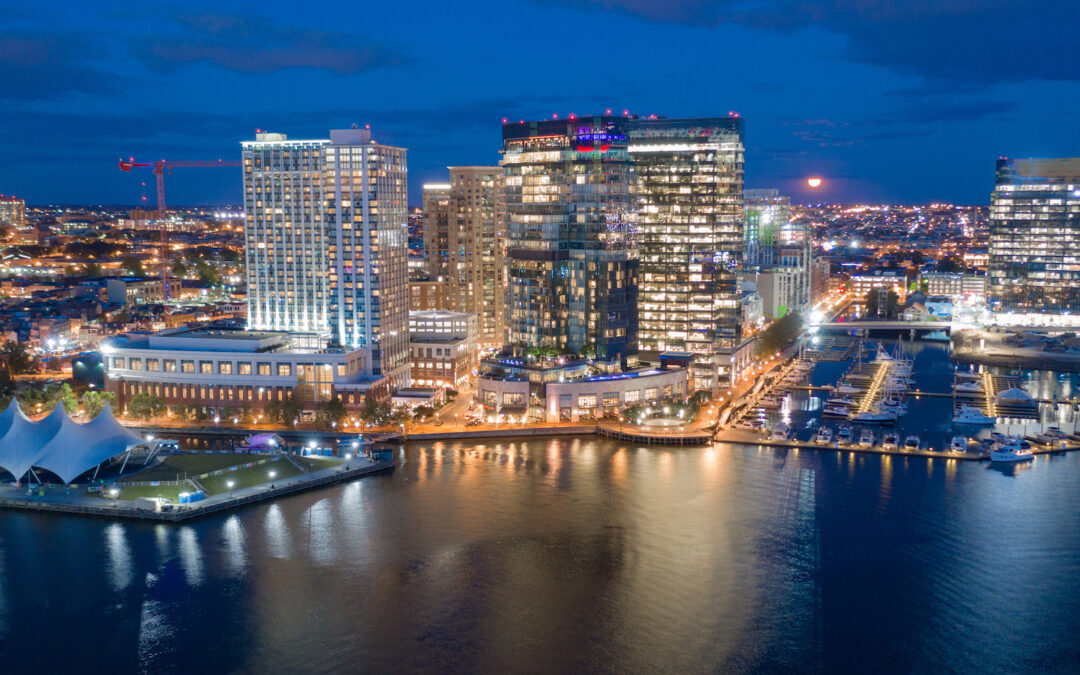As we enter 2025, Baltimore’s multifamily market continues its resilience in the face of record levels of new supply and a volatile bond market. Multifamily absorption has outperformed, with 2024 being the second-best year since 2000. This demand is supported by strong household formation, elevated home prices, and continued affordability challenges within the for-sale market, which will likely persist in 2025.
The timing is ideal, as the steady influx of new supply over the past two years was met with robust demand for apartments. Multifamily fundamentals are poised to strengthen in 2025, as new supply will drop off over the next several years as multifamily permits have declined significantly.
The U.S. economy is showing robust growth, buoyed by strong consumer spending and fiscal stimulus. Inflation continues its sticky descent toward the Fed’s 2% target rate, though it is projected not to fully return to that level in 2025.
With unemployment steady at just over 4% and an aging Baby Boomer workforce entering retirement, the labor market is already under strain. President Trump’s proposed immigration curbs could further tighten the workforce by limiting the supply of available workers, particularly in industries reliant on immigrant labor, such as construction and hospitality.
Trends to Watch:
Multifamily Demand to Remain Elevated
• Strong household formation, high homeownership costs, and favorable demographics drive multifamily demand in Baltimore.
• Rising mortgage rates, low inventory levels, and boosted home prices have pushed homeownership out of reach for many.
• The homeownership rate for households under the age of 35 has declined to the lowest level since 2020.
Supply Slowing with Permits Declining
• Baltimore’s multifamily permitting activity of 5 or more units experienced a notable decline in 2024, with just over 2,000 units permitted, marking a 45% decrease compared to the average of the previous two years.
• Multifamily deliveries are projected to finish well below the average, according to CoStar, with roughly 1,500 units expected to open their doors in 2025.
• This slowdown signals a potential rebalancing of supply, creating opportunities for rent growth and sustained occupancy rates in the years ahead.
Higher-for-Longer Interest Rates
• The Federal Reserve is not expected to cut rates at the beginning of 2025, signaling rates are expected to remain elevated in the near term.
• Inflationary pressures from Trump’s expansionary policies, such as tax cuts and tariffs, could inhibit future cuts this year.
• If rates decline, it could unlock additional capital, accelerating transaction volumes and boosting investment activity. However, even if rates remain elevated, Baltimore’s multifamily market stands to benefit from sustained rental demand.
Value-Add Opportunities in Baltimore’s Multifamily Market
• Value-add multifamily properties—particularly Class C garden-style apartments with scale—continue to dominate investor interest in Baltimore.
• These assets offer significant potential for repositioning, allowing buyers to implement capital improvements to enhance interiors, amenities, and energy efficiency, thereby achieving higher rents.
• Suburban multifamily properties outside Baltimore City are attracting increased investor attention due to lower tax rates and fewer regulatory hurdles.

